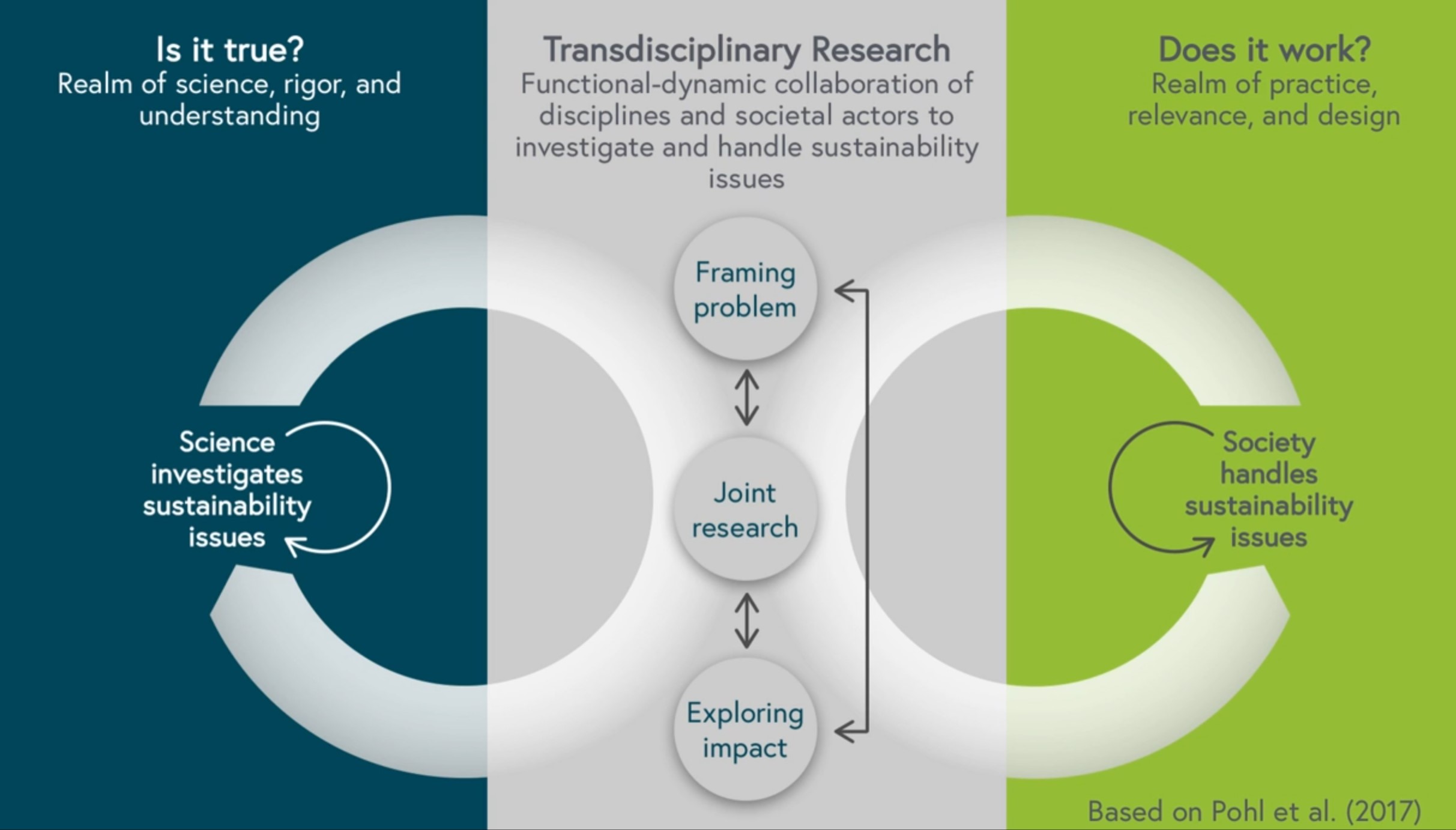Network for Transdisciplinary Research
Research Process
The stages of Transdisciplinary Research
Phase 1: Jointly framing problems, goals and processes
The first phase of a transdisciplinary project is about jointly envisaging a project and framing goals, problems, and research processes. Main tasks in phase 1 include:
- Jointly identify relevant understandings of the problem situation
- Clarify who to involve – actor and context analysis to find relevant stakeholders
- Build a project team that has the necessary diversity, expertise and capacity to shape the TDR process
- Matching societal knowledge demand and research questions
- Jointly define achievable project goals
Phase 2: Jointly conducting research
The second phase of a transdisciplinary project is about jointly conducting research. A key challenge is the integration of knowledges and interests. Main tasks in phase 2 include:
- Bringing scientists with different backgrounds and stakeholders together in a structured way to reach the project goals
- Jointly generate knowledge
- Bridging different knowledge and interests (by some called ‘integration’)
- Applying and adjusting methods for knowledge co-production according to the project goals
Phase 3: Jointly explore ways to impact in science and society
In the third phase of a transdisciplinary project, the jointly produced knowledge and practices are fed back into science and society. Main tasks in phase 3 include:
- Jointly reconsider ways to impact
- Jointly develop and test ideas, measures, and solutions
- Jointly evaluate impact

The three phases of transdisciplinary research. (Based on Pohl et al., 2017)
These three phases are overlapping and often addressed in an iterative way. For example, project goals often need to be adjusted or at least specified more precisely during the process when context conditions change, unexpected results are obtained, or new actors join the project. Also, co-designing products and other outputs as well as exploring ways to impact should take place whenever relevant results or other opportunities are emerging.
It is useful to be familiar with methods for co-production when working in a TD project.
Reference
Pohl, C., Truffer, B. & Hirsch Hadorn, G. (2017). Addressing wicked problems through transdisciplinary research. In R. Frodeman, J. T. Klein & R. C. S. Pacheco (Eds.), The Oxford handbook of interdisciplinarity: Second Edition (pp. 319-331). Oxford, UK: Oxford University Press.
Navigation
Newsletter td-info
td-net
House of Academies
Laupenstrasse 7
P.O. Box
3001 Bern
Switzerland